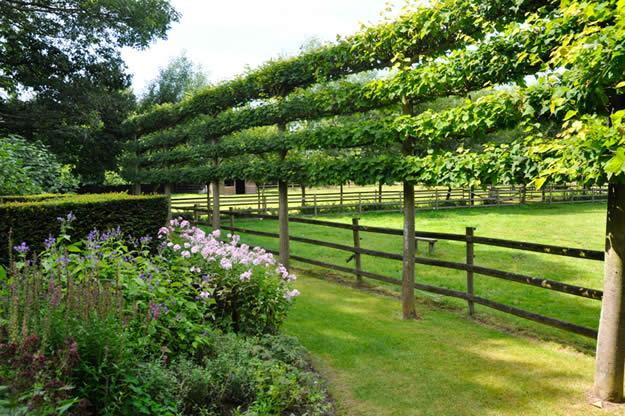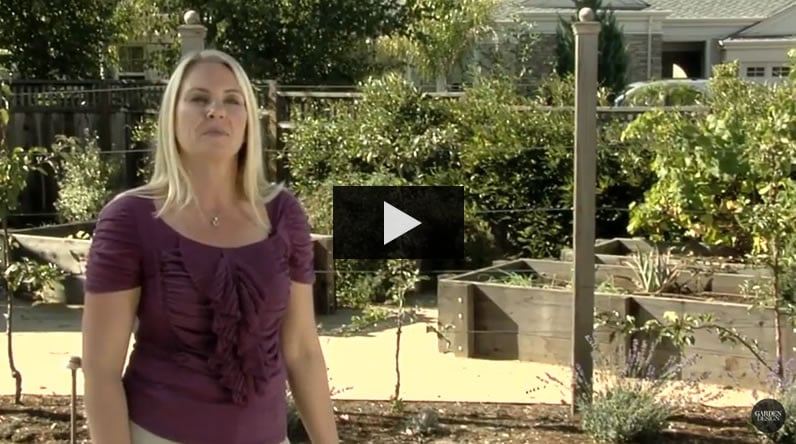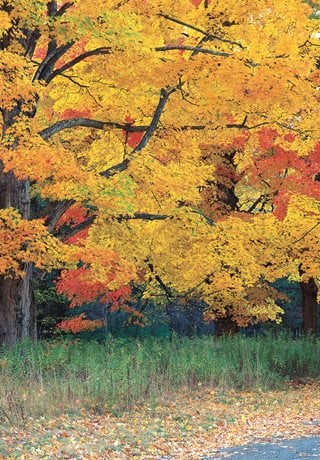Using Espaliers in the Garden
Get recommendations for fruit-bearing and ornamental trees that work great as espaliers, plus tips and tricks for training themEspaliers are often seen as the high-maintenance hedging of the landscape design world. Sure, the time for training and hands-on maintenance is more than your standard tree or shrub, and they are often seen in the most formal and grand of gardens. But really, espaliers can work in almost any garden type: big and small, formal and informal, grand and modest.

The branches of these trees were trained into horizontal rows, mimicking the rails of the fence below.
For city gardeners, espaliers in containers or planted along a brick wall provide interest and life to a barren visual space. Compared to ivy, the maintenance and price are relatively low since it will provide instant vertical impact to the space without taking valuable square footage.
In theory, any tree or large shrub can be made into an espalier, but it is essential to select a species that will ultimately fit your space and conditions. Often when you see an espalier tree it is a fruit tree, namely apple and pear trees. The practice of training fruit-bearing plants dates back to the Romans and Egyptians, but it was the Europeans—specifically the French—who influenced and perfected the designs we see today.
Espalier Trees: Fruit vs. Ornamental
Here are some reasons behind using the espalier technique with fruit-bearing trees:
- They are easy to train. They take training quite well when they are young and pliable, allowing you to shape them in a variety of forms.
- They do not grow completely out of the space in which they are intended to stay. Looking back into garden history, espaliers were found inside cloisters, where every inch was very valuable.
- When you have a flat tree against a wall or fence, it is much easier for the sun to penetrate the foliage, thus ripening fruit that might not have ripened otherwise. The espalier technique is often used in cooler climates where ripening fruit is difficult.
However, if raising fruit is not your thing and you just want to add interest to a wall in a tight or design-barren space, there are numerous plants that take training quite well. From my experience, trees with good horizontal branching structure and a slower growth rate work best. One of the most beautifully trained trees I’ve ever seen is a Ginkgo biloba at Swarthmoore College in Swarthmore, Pennsylvania. The tree was perfectly placed along a towering building where the tree was able to reach the third floor and the branches informally covered the building.
When I’m designing, I love using espalier as a screen along a fence area. There’s something about a living fence that just draws my eye in—the simplicity, restraint, the uniqueness—not sure exactly, but whatever it is, it works for me! Don’t let the informality of your garden or lack of vertical walls limit you from using an espalier in your landscape. Using a design element unexpectedly or outside the norm creates a garden that is uniquely yours and inspires others.

Grapes informally trained on the wall of a Belgian garden of designer Dina Deferme.

Horizontal cordon espalier being used as to screen off a private patio.

The horizontal cordon is very effective and uses minimal space.

A pear tree is horizontally trained against a garage, adding a bit of whimsy to an otherwise bland wall.

A gingko resides on the wall at Chanticleer Gardens, just outside Philadelphia, adding a touch of funkiness to the ruin gardens.

One of my favorite espaliered trees resides at Swarthmore College. The lanky gingko is trained in the palmette oblique fashion and races up the immense stone wall.

Clockwise from top: Don’t be overwhelmed when the espalier gets out of hand during the season-nip the branches back a leaf node to achieve the uniformity you want. Use 3-ply jute to attach the branch to the wire. (After a season the jute will rot away which keeps the branch from being girdled by the restraint.) To help train younger plants, use braided stainless steel cabling and turnbuckles to create a sturdy guide.

On this living fence we trained the horizontal branches to be roughly 10-12” tall with about the same spacing between the runs.

Debora Silver employs a palmette verrier trained apple tree along a client’s garage in Birmingham, Michigan. The bright green foliage pops off the dark color of the garage, and the structure of the trees provides a wonderful pattern.

